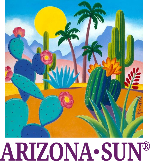
When it comes to skin care, sage may not be the first ingredient that comes to mind. However, this often unrecognized desert herb packs a powerful and healthful punch - especially when it comes to promoting healthy, radiant skin.
Sage, which has been celebrated for its numerous benefits, is now a popular skin care moisturizing ingredient.
The Power of Antioxidants
One of the primary reasons sage is so beneficial for the skin is due to its high antioxidant content. Antioxidants are essential in protecting our skin from free radicals, which can cause premature aging, fine lines, and wrinkles. By incorporating sage into your skincare routine, you're providing your skin with a powerful ally in the fight against aging.
Anti-Inflammatory Effects
Sage also boasts anti-inflammatory properties, making it an ideal ingredient for those with sensitive or acne-prone skin. It reduces the redness and inflammation associated with breakouts and other skin irritations. Plus, the soothing effects of sage calm irritated skin to promote a balanced complexion.
Natural Astringent Qualities
Another benefit of sage lies in its astringent properties. These qualities help tighten the skin and refine pores, resulting in a smoother appearance and better overall texture. For individuals dealing with oily or combination skin, adding sage to their skincare regimen helps regulate sebum production and minimize excess oil.
Sage Infused DIY Skin Care Treatments and the Arizona Sun Skin Care Line
If you're ready to enjoy all that sage has to offer your skin, consider trying out some at-home treatments using this versatile herb. You can create a simple facial steam by adding a handful of dried sage leaves to a bowl of hot water; inhale the steam and allow it to permeate your pores.
Alternatively, mix dried ground sage with honey or yogurt for a soothing and purifying face mask.
An really easy way to make sure you’re enjoying the soothing benefits of sage is to look at the line of skin care products in the Arizona Sun line. You’ll find sage in the ingredients listings, so you can choose your skin care product accordingly.
Incorporating Sage into Your Daily Routine
With the myriad of benefits that sage provides, it's no wonder this humble herb has found its way into many skincare products. When shopping for cleansers, moisturizers, or sunburn relief products, keep an eye out for those that contain sage extract. By weaving sage into your daily skin care routine, you'll be on your way to a healthier, more vibrant complexion.T
The Sage Plant: A Hardy Desert Dweller
The sage plant, scientifically known as Salvia officinalis, is a versatile and sturdy herb that has been widely used for centuries. From its culinary and medicinal applications to its ornamental value, this resilient highlights its incredible range of uses.
A Brief Introduction to the Sage Plant
Native to the Mediterranean region, the sage plant belongs to the Lamiaceae family and boasts over 900 different species. The aromatic plants feature grayish-green leaves with a velvety texture that surround purple, pink, or white flowers.
Sage plants are perennials, meaning they continually return each year if properly maintained.
Sage is renowned for its many uses; it is a popular herb used in cooking for its unique flavor profile and has been used as a traditional herbal remedy for a variety of ailments. In addition to these practical applications, sage makes an attractive addition to any garden or landscape design.
Thriving in the Desert Environment
Desert environments present distinctive challenges for plant growth due to their extreme temperatures, limited water sources, and overall harsh conditions. However, many desert plants have evolved unique ways to survive the desert atmosphere.
When it comes to the sage plant, certain species have adapted remarkably well to desert life. For example, desert sage is a hardy and drought-tolerant plant native to arid regions throughout the western United States, including Arizona. The plant's adaptability to the desert climate allows it to prosper even under extreme temperature fluctuations and with very little water.
Another example is white sage - often found growing naturally in desert regions of California, Nevada, Arizona, and New Mexico. White sage features thick, silver-gray foliage. Its resilience and low-maintenance requirements make it a popular choice for xeriscaping, or landscapes that require little or not irrigation.
Growing Desert Sage
If you find yourself in the desert or simply want to cultivate a drought-tolerant garden, sage plants are good selections. Desert sage is not only tolerant of dry environments but may also be less susceptible to diseases and pests commonly found in damper conditions.
How the Plant Is Harvested for its Use in Skin Care
Step 1: Harvesting Sage
The first step in extracting sage is to gather the plant material. Ideally, sage is harvested during its flowering stage for peak oil content and the best possible quality. The leaves are ideally picked in the morning after any dew has evaporated, as moisture interferes with the extraction process.
Step 2: Drying the Sage
After harvesting, the sage leaves are dried. Workers lay the leaves on a flat surface, in a well-ventilated area, away from the direct rays of the sun. Doing so safeguards the plant’s delicate and sought-after oils.
Step 3: Extracting the Sage Oil
Harvesters and manufacturers choose one of several methods to extract sage oil. This may include steam distillation, solvent extraction, or a process known as cold pressing.
Steam Distillation: The most common extraction method for sage involves steam distillation, which uses heat and water vapor to release the essential oil from the plant material. This process works by suspending dried sage in a distillation chamber above boiling water.
As steam rises through the chamber, it breaks down cell walls that contain volatile oils, which evaporate along with the water vapor. This mixture then passes through a condenser that cools it into a liquid form. Finally, oil and water separate—usually by gravity—yielding and resulting in a pure sage essential oil.
Solvent Extraction: Another method of extracting sage is through solvent extraction. During this process, solvents like ethanol or hexane dissolve plant matter and strip away its volatile oils. The solvent-oil solution is then filtered and evaporated, leaving behind a concentrated sage extract.
Cold Pressing: For certain plants, cold pressing can also be used to extract oils. While this method is not as effective for extracting sage, due to the plant’s low oil content, it's worth mentioning it as an alternative approach. Mechanical presses crush the plant material, squeezing out the essential oil without introducing heat or solvents.


